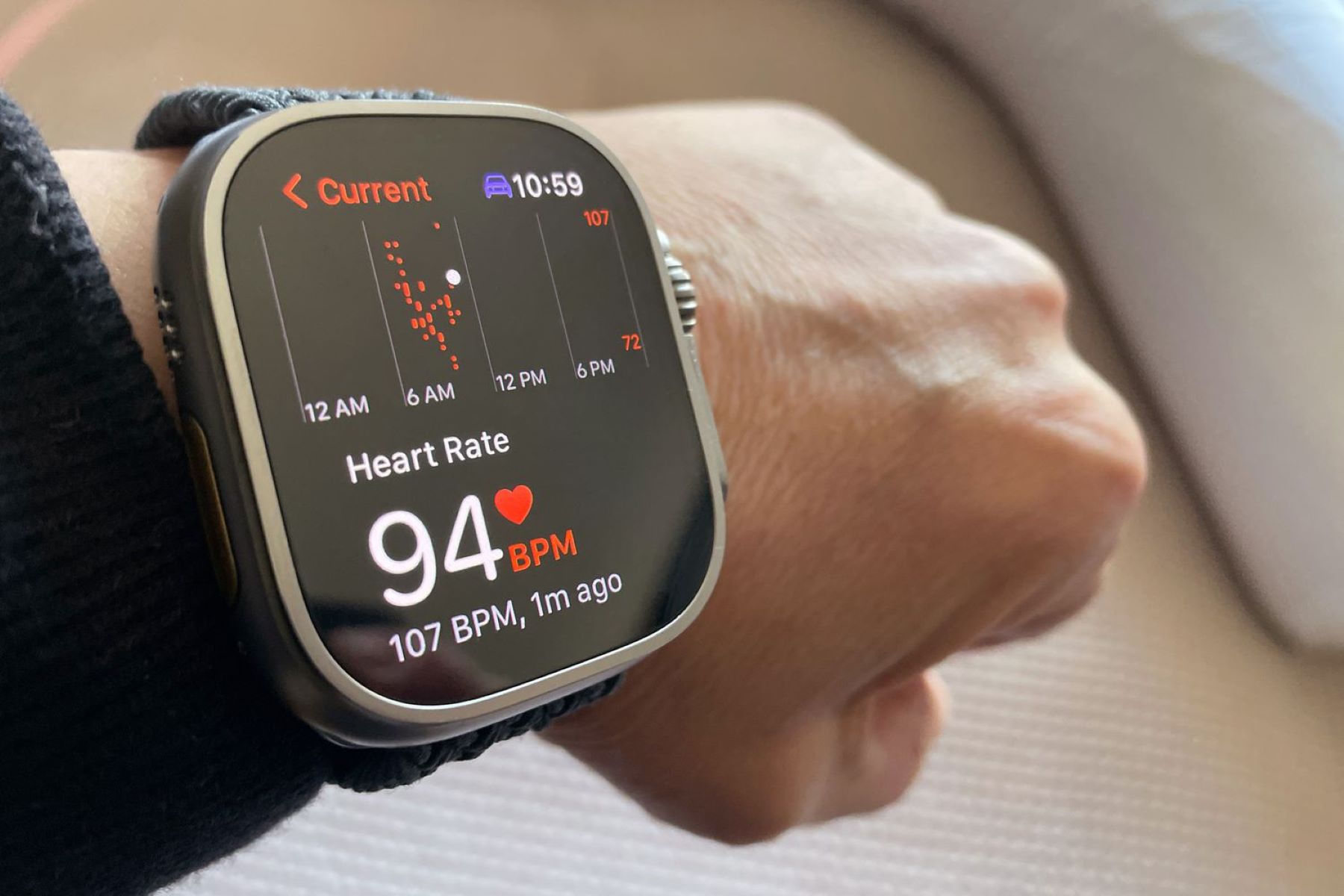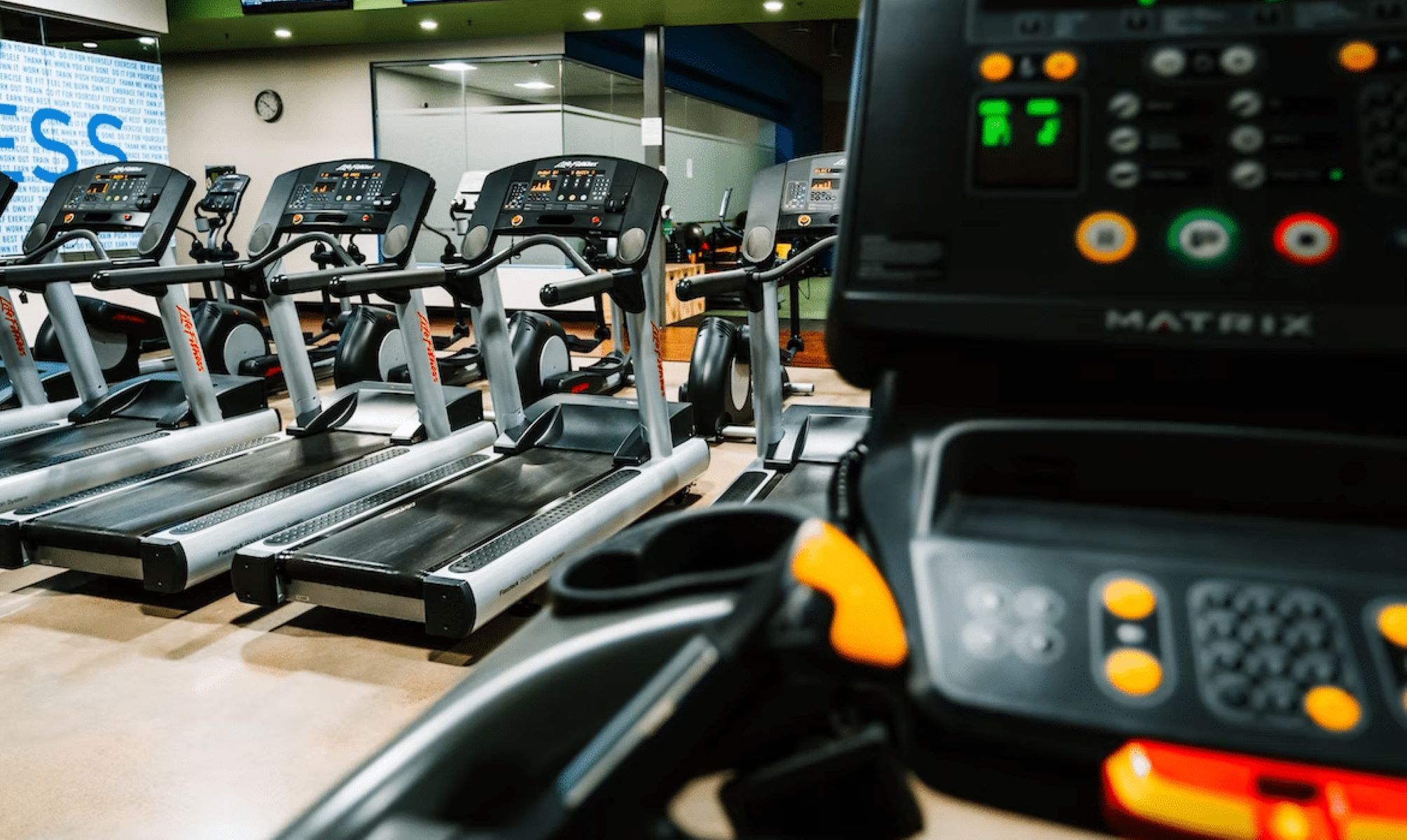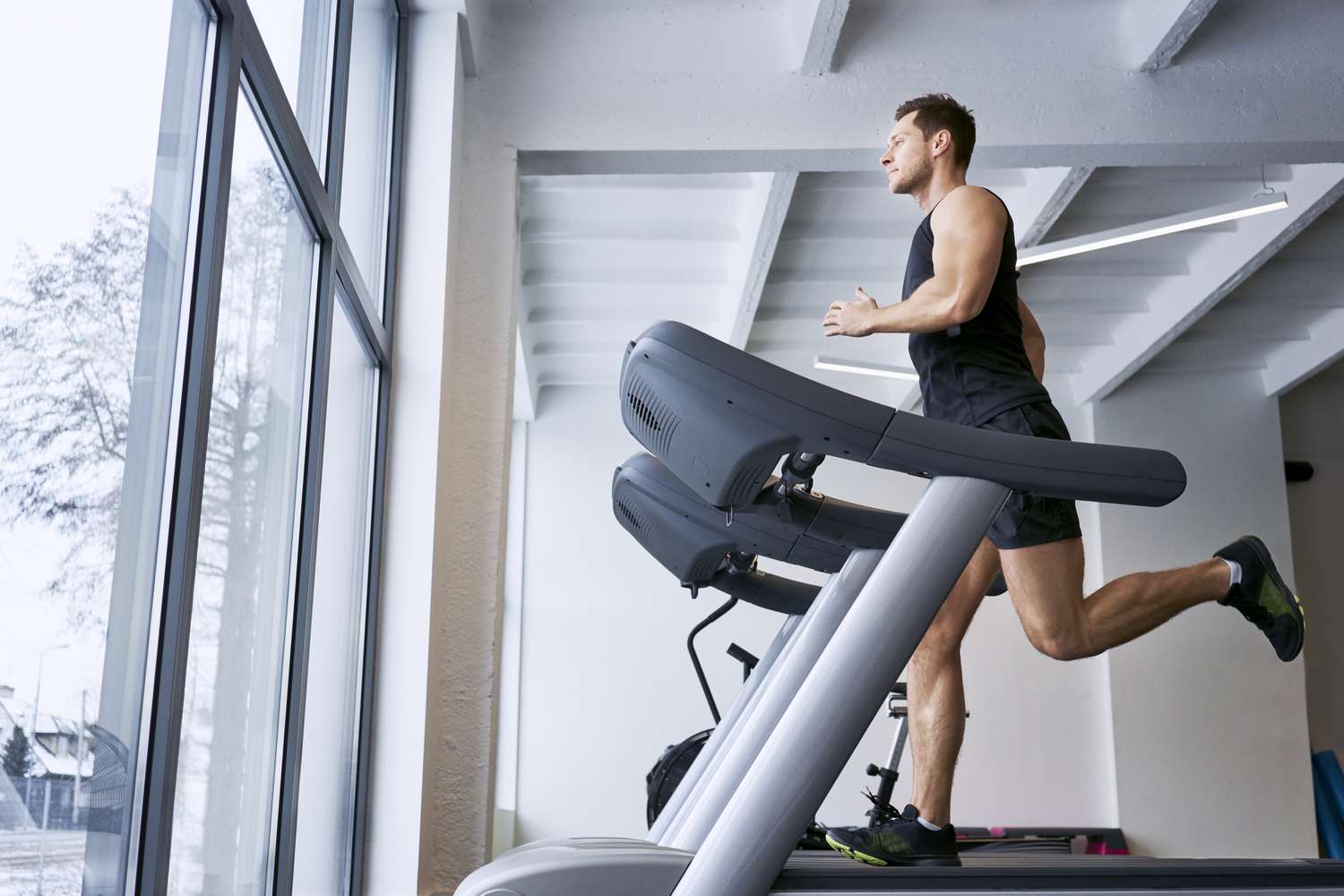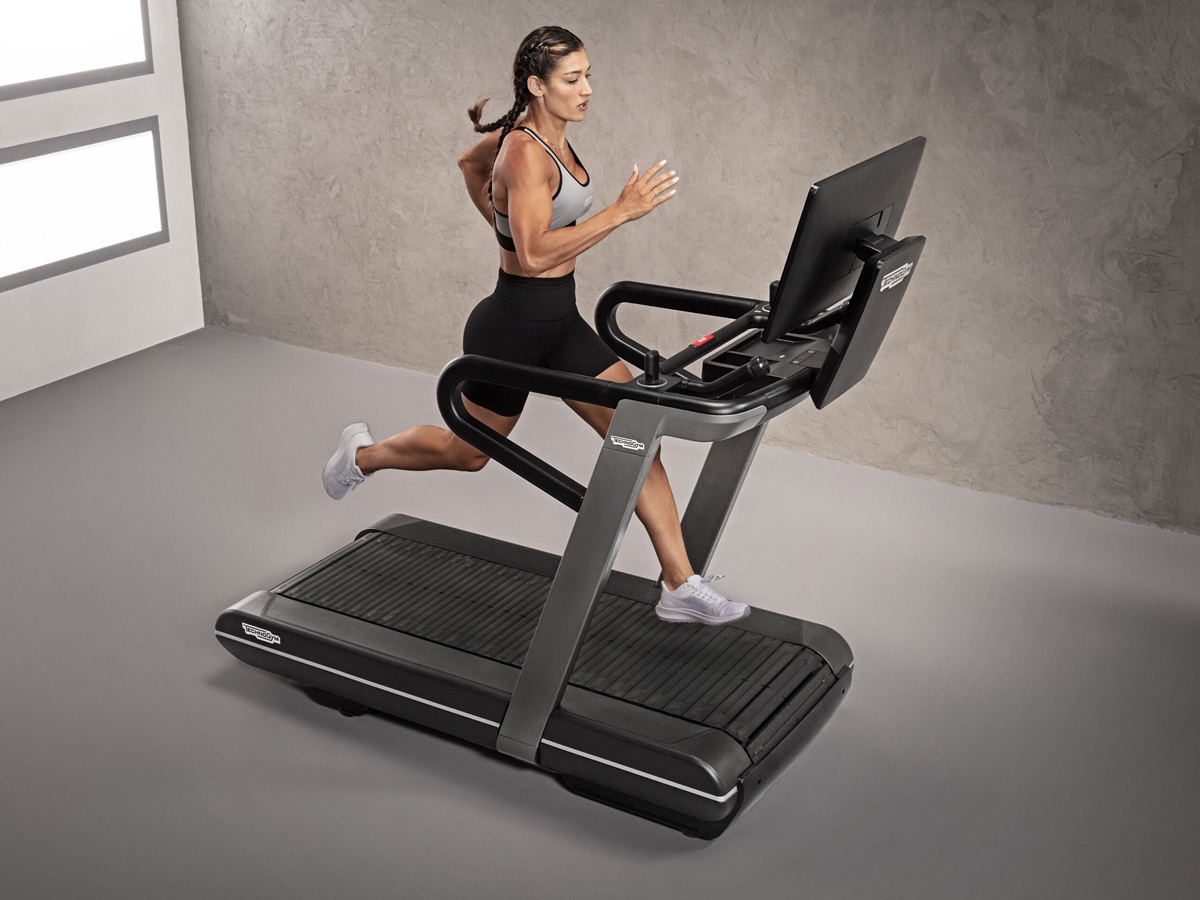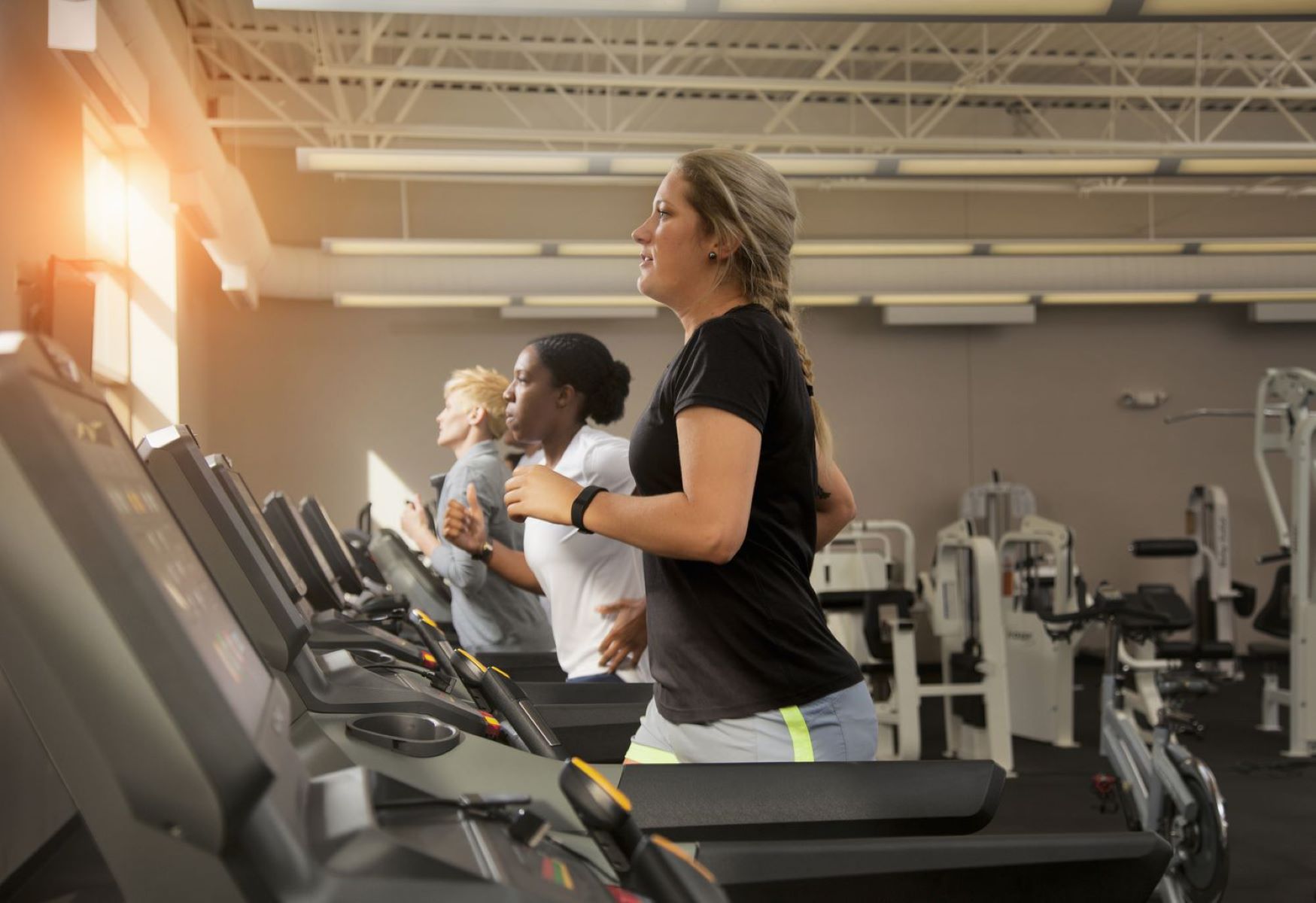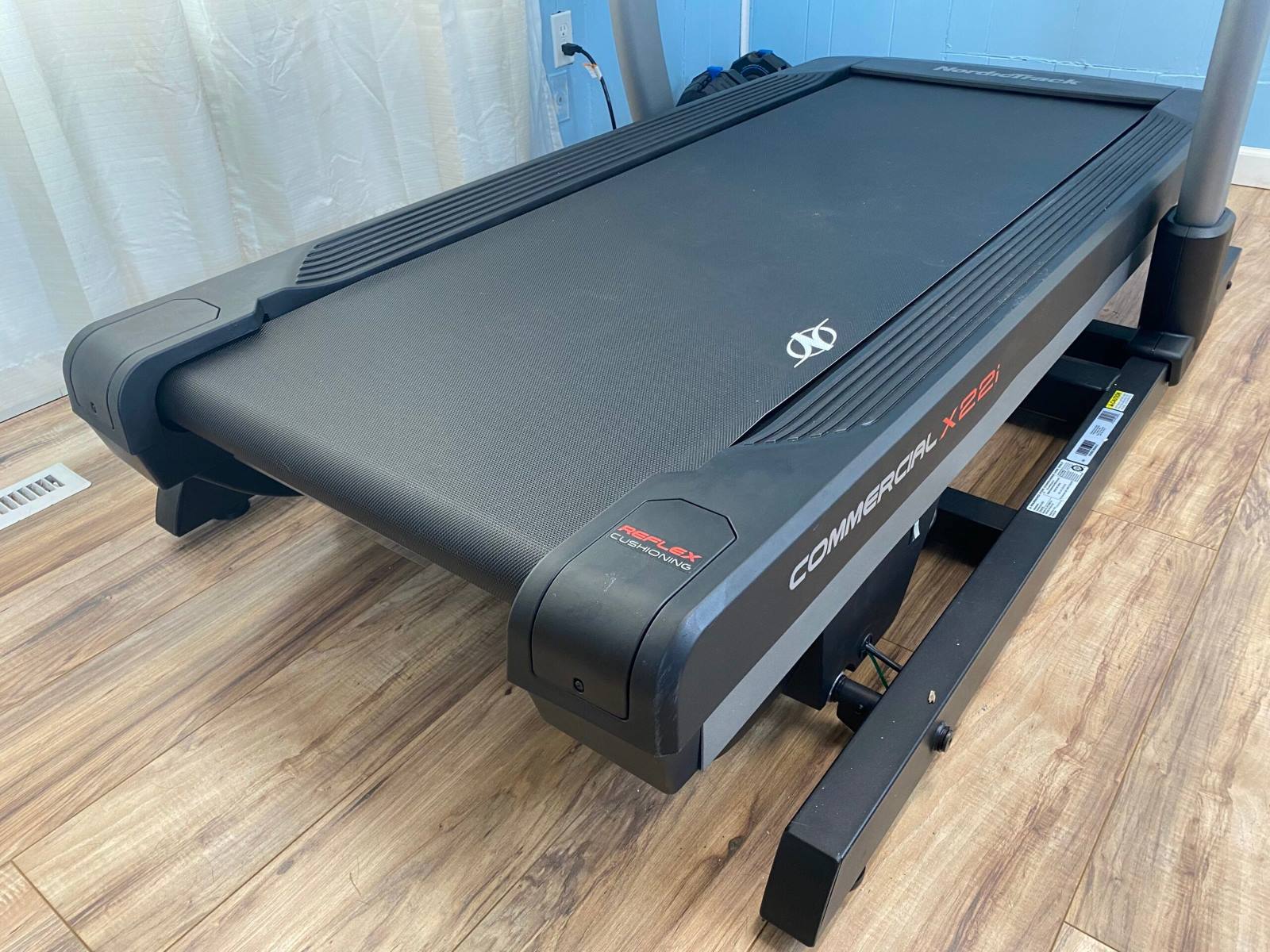

Featured
How To Sprint On Treadmill
Modified: August 21, 2023
Learn the featured technique of sprinting on a treadmill with our step-by-step guide. Achieve maximum intensity and enhance your cardio workouts in no time.
Introduction
Have you ever wondered how to optimize your workouts and take your cardio training to the next level? Look no further than sprinting on a treadmill. This high-intensity exercise not only offers a wide range of benefits but also provides a convenient and controlled environment for your sprints.
Running at top speed on a treadmill allows you to push your limits, challenge your body, and build endurance like never before. Whether you’re a seasoned athlete or just starting your fitness journey, incorporating sprints on a treadmill can help you achieve your fitness goals.
In this article, we will explore the benefits of sprinting on a treadmill, proper warm-up techniques, setting the treadmill for optimal performance, correct sprinting technique, safety precautions, common mistakes to avoid, interval training for sprints, and cooling down after your intense sprinting session.
By the end of this article, you will have a comprehensive understanding of how to effectively sprint on a treadmill to enhance your cardiovascular fitness, burn calories, and improve your overall performance.
So, let’s dive in and discover the exciting and rewarding world of sprinting on a treadmill!
Benefits of Sprinting on a Treadmill
Sprinting on a treadmill offers a multitude of benefits that can help transform your fitness routine. Let’s take a closer look at some of the key advantages:
- Cardiovascular Fitness: Sprinting on a treadmill is a highly effective cardiovascular exercise that elevates your heart rate and improves your cardiovascular health. Regular sprinting sessions can strengthen your heart muscle, increase lung capacity, and enhance overall endurance.
- Calorie Burning: If you’re looking to shed those extra pounds, sprinting on a treadmill can be a game-changer. This high-intensity exercise burns a significant amount of calories in a short period of time, helping you in your weight loss journey.
- Muscle Tone and Strength: Sprinting engages multiple muscle groups, including your glutes, quads, calves, and core. Over time, this can help tone and strengthen these muscles, leading to improved lower body strength and stability.
- Time-Efficient: Compared to longer duration workouts, sprinting on a treadmill allows you to get an effective workout in a shorter amount of time. By incorporating high-intensity intervals into your routine, you can maximize your calorie burn and fitness gains in as little as 20 minutes.
- Convenience and Safety: Sprinting on a treadmill provides a controlled environment. You can adjust the speed, incline, and intensity according to your fitness level and preferences. Moreover, it eliminates the need for outdoor running, making it a more convenient option regardless of weather conditions or safety concerns.
- Progressive Challenge: Treadmills offer the ability to gradually increase your sprinting speed and intensity. As your fitness levels improve, you can continuously challenge yourself by setting higher goals and pushing your limits, leading to continuous progress and improvement.
These are just a few of the many benefits that sprinting on a treadmill can offer. Whether you’re aiming to improve your cardiovascular fitness, lose weight, or enhance muscle tone, incorporating this high-intensity exercise into your routine can yield remarkable results.
Proper Warm-up
Before diving into your sprinting session, it’s crucial to properly warm up your body to prevent injuries and enhance performance. A dynamic warm-up routine prepares your muscles, increases blood flow, and improves flexibility. Here are some essential steps to follow for an effective warm-up:
- Start with a brisk walk or light jog: Begin your warm-up with a few minutes of easy cardio to gradually increase your heart rate and warm up your muscles.
- Dynamic stretching: Perform dynamic stretches that target the major muscle groups involved in sprinting. These include leg swings, walking lunges, high knees, and butt kicks. Focus on stretching your hamstrings, quads, calves, and hip flexors.
- Activate your core and glutes: Engage your core muscles with exercises like planks and bridges. Additionally, perform glute activation exercises such as glute bridges or clamshells to ensure your glute muscles are activated and ready for the intensity of sprinting.
- Perform mobility exercises: Incorporate exercises that improve joint mobility and range of motion. This can include arm circles, shoulder rolls, ankle rotations, and hip rotations. These exercises help loosen up the joints and prepare them for the explosive movements of sprinting.
- Dynamic movements: Incorporate some dynamic movements specific to sprinting, such as high knees, butt kicks, and A-skips. These movements simulate the actions performed during sprinting and further prepare your body for the intensity of the workout.
Remember to focus on performing each movement with proper form and control. Take your time with the warm-up, as it plays a vital role in preventing injuries and optimizing your performance during the sprinting session. Aim for a warm-up duration of 10-15 minutes before moving on to the main portion of your workout.
By incorporating a thorough warm-up routine into your sprinting regimen, you’ll help reduce the risk of muscle strains, improve your overall performance, and ensure a safe and effective workout.
Setting the Treadmill
Setting up your treadmill correctly is crucial for a safe and effective sprinting session. Here are some key considerations when adjusting the settings:
- Speed: Start with a comfortable jogging or walking pace to warm up your muscles. As you progress into the sprinting phase, gradually increase the speed to a level that challenges you but still allows you to maintain proper form.
- Incline: Adjusting the incline on the treadmill can simulate outdoor running conditions and engage different muscle groups. A slight incline of 1-2% can help mimic the resistance faced when running outdoors and engage your glutes and hamstrings more effectively.
- Distance from Console: Make sure you position yourself at a safe distance from the console panel to avoid accidentally hitting any buttons or losing balance during your sprints.
- Handrail Usage: Avoid gripping the handrails tightly during your sprints as it can affect your natural running form. Only use the handrails for balance support when needed.
It’s important to note that the settings may vary depending on your fitness level and specific goals. Experiment with different speeds and inclines to find the settings that challenge you while maintaining proper form and safety.
Additionally, make sure to familiarize yourself with the specific features and controls of your treadmill model. Read the instruction manual or seek guidance from a fitness professional to ensure you are utilizing all available options effectively.
Remember to start with a warm-up and gradually increase the speed and intensity throughout your workout. Pay attention to your body and adjust the settings as needed to match your fitness level and capabilities.
By setting up the treadmill correctly, you’ll optimize your sprinting experience and minimize the risk of injuries, allowing you to focus on improving your speed, endurance, and overall fitness.
Correct Sprinting Technique
Mastering the correct sprinting technique is essential for maximizing your performance and reducing the risk of injuries. Follow these tips to ensure you maintain proper form during your sprints:
- Posture: Keep your torso upright, shoulders relaxed, and chest open. Avoid slouching or leaning forward, as this can put unnecessary strain on your back and inhibit optimal breathing.
- Arm Swing: It’s important to maintain a controlled and consistent arm swing. Bend your elbows at approximately 90 degrees and drive your arms forward and backward in a coordinated motion. Avoid crossing your arms in front of your body or allowing excessive movement of your arms.
- Foot Strike: Land on the balls of your feet with a midfoot strike, not the heel. This allows for a more efficient transfer of energy and reduces the risk of injuries. Aim for a quick and powerful push-off with each stride.
- Stride Length: Focus on taking short, quick strides rather than elongating your strides. Overstriding can increase the risk of injuries and reduce the efficiency of your sprints. Aim for a cadence of around 180 steps per minute.
- Core Engagement: Engage your core muscles throughout the sprinting motion to maintain stability and alignment. A strong core will help improve your running efficiency and reduce the risk of excessive rotation or side-to-side movement.
- Breathing: Breathe deeply and rhythmically as you sprint. Avoid shallow breathing and focus on exhaling forcefully to expel waste carbon dioxide and optimize oxygen intake.
- Focus on Form: Concentrate on maintaining proper form throughout your sprinting session. It’s easy to lose focus and let your form deteriorate as you fatigue, but maintaining good technique is crucial for optimal performance and injury prevention.
Remember, practice makes perfect. It may take time and consistent effort to master the correct sprinting technique. Start with shorter sprints at a comfortable pace and gradually increase your speed and distance as you become more comfortable with the proper form.
Consider recording yourself or seeking feedback from a trained professional or experienced runner to identify any areas where you can improve your technique. By developing and maintaining good sprinting form, you’ll be able to maximize your performance, prevent injuries, and achieve your fitness goals more effectively.
Safety Precautions
While sprinting on a treadmill can be an exhilarating and effective workout, it’s important to prioritize safety to prevent injuries and ensure a positive exercise experience. Here are some key safety precautions to keep in mind:
- Start with a proper warm-up: Always begin your sprinting session with a dynamic warm-up to prepare your muscles and joints for the intense activity. This helps prevent strains, sprains, and other injuries.
- Wear appropriate footwear: Ensure that you wear supportive and well-fitting athletic shoes with good traction. This helps provide stability and cushioning, reducing the risk of slipping or losing balance on the treadmill.
- Gradually increase intensity: If you’re new to sprinting or haven’t exercised at high intensities before, start with shorter sprint intervals and gradually increase the duration and intensity over time. This allows your body to adapt and minimizes the risk of overexertion or muscle fatigue.
- Stay hydrated: Proper hydration is crucial during any physical activity. Ensure you drink enough water before, during, and after your workout to replenish fluids lost through sweating.
- Pay attention to your body: Listen to your body and respect your limits. If you experience severe pain, dizziness, or shortness of breath, stop your workout and seek advice from a medical professional if necessary.
- Use the treadmill’s safety features: Familiarize yourself with the safety features of your treadmill, such as the emergency stop button or safety tether. These can help you quickly halt the machine if needed.
- Maintain proper posture: Avoid leaning too far forward or backward while sprinting. Maintaining an upright posture helps prevent strain on your back and maintains proper alignment.
- Avoid distractions: Stay focused on your sprinting workout and avoid distractions such as reading, texting, or watching television. Any distraction can increase the risk of losing balance or form.
- Keep the surrounding area clear: Ensure that the space around the treadmill is clear of any obstacles or hazards. This minimizes the risk of tripping or injury during your sprinting session.
- Consult with a healthcare professional: If you have any underlying health conditions or concerns, it’s wise to consult with a healthcare professional before starting a sprinting routine. They can provide personalized advice and guidance based on your specific needs.
By following these safety precautions, you can enjoy a safe and effective sprinting workout that maximizes your fitness gains while minimizing the risk of injuries. Remember, safety should always be a top priority for any exercise regimen.
Common Mistakes to Avoid
While sprinting on a treadmill can be a highly effective workout, there are some common mistakes that people often make. By being aware of these mistakes, you can avoid them and ensure you’re getting the most out of your sprinting sessions. Here are some common mistakes to avoid:
- Skipping the warm-up: Failing to properly warm up your muscles can increase the risk of injuries. Always dedicate time to a dynamic warm-up routine before starting your sprinting workout.
- Starting at high intensity: It’s important to gradually increase the intensity of your sprints. Jumping straight into high-intensity sprints without building up the intensity can lead to muscle strains or fatigue.
- Incorrect sprinting form: Maintaining proper form is crucial for an effective and safe workout. Avoid overstriding, leaning too far forward or backward, or swinging your arms excessively.
- Using the handrails too much: Holding onto the handrails of the treadmill can disrupt your natural running form and reduce the effectiveness of your workout. Only use the handrails for balance support when necessary.
- Not adjusting the treadmill settings: Failing to set the treadmill properly can limit the effectiveness of your sprinting workout. Adjust the speed and incline to match your fitness level and goals.
- Ignoring your breathing: Proper breathing technique is crucial for maintaining stamina and preventing side stitches. Focus on deep and rhythmic breathing throughout your sprinting session.
- Pushing through pain: While some discomfort during exercise is normal, pushing through sharp or severe pain can exacerbate injuries. Listen to your body and stop if you feel any intense pain.
- Not incorporating rest days: Rest is integral to allow your muscles and body to recover and strengthen. Avoid overtraining by incorporating rest days into your sprinting routine.
- Not hydrating adequately: Dehydration can negatively impact your performance and increase the risk of injuries. Drink enough water before, during, and after your sprinting sessions.
- Forgetting to cool down: Cooling down after your sprinting session helps reduce muscle soreness and gradually bring down your heart rate. Spend a few minutes walking or stretching to allow your body to recover.
By avoiding these common mistakes, you’ll be able to optimize your sprinting workouts, reduce the risk of injuries, and maximize your fitness gains. Always strive for proper form, gradual progression, and attention to your body’s signals.
Interval Training for Sprints
Interval training is a popular and highly effective method of incorporating sprints into your workout routine. This training technique alternates between periods of intense effort and recovery. Here’s how you can incorporate interval training into your sprinting sessions:
- Warm-up: Begin with a dynamic warm-up routine to prepare your body for the upcoming intense intervals.
- Sprint Interval: Start by sprinting at a high intensity for a predetermined duration, such as 20-30 seconds. Aim to push yourself to near-maximum effort during these intervals.
- Recovery Interval: After the sprint interval, allow yourself a period of active recovery by jogging or walking at a slower pace for a set duration, such as 1-2 minutes. Use this time to catch your breath and recover before the next sprint interval.
- Repeat the Intervals: Continue alternating between sprint intervals and recovery intervals for a desired number of repetitions. Beginners may start with 3-5 sets, while more experienced individuals can gradually increase the number of intervals.
- Cooldown: Finish your interval training session with a proper cool-down, including walking or light jogging, followed by static stretching to aid in muscle recovery.
Interval training allows you to challenge your cardiovascular system and improve your speed and endurance. The high-intensity sprint intervals give you the opportunity to push your limits, while the recovery intervals allow for enough rest to perform at your best during each sprint.
You can customize your interval training to suit your fitness level and goals. As you progress, you can increase the intensity or duration of your sprint intervals while decreasing the recovery time. This progressive approach helps improve your aerobic capacity and overall fitness.
It’s important to note that interval training can be intense, so always listen to your body and adjust the intensity and duration of the intervals based on your fitness level and comfort. Proper rest and recovery are also key components of interval training, so allow adequate time between sprinting workouts to avoid overexertion or injury.
Interval training for sprints is an excellent way to elevate your cardiovascular fitness, burn calories, and improve your overall performance. Incorporating this training method into your sprinting routine will help you achieve your fitness goals more efficiently.
Cooling Down After Sprinting
Cooling down after a sprinting session is an essential step to aid in recovery and prevent muscle soreness. Taking the time to properly cool down allows your body to gradually transition from intense exercise to a resting state. Here’s how to effectively cool down after sprinting:
- Gradual Decrease in Intensity: Begin by gradually reducing the speed and intensity of your running. Transition from sprinting to a slower jog or walk to allow your heart rate to gradually return to a normal level.
- Walk or Light Jog: Spend 5-10 minutes walking or lightly jogging to help flush out metabolic waste products and facilitate the circulation of oxygenated blood to your muscles.
- Static Stretching: Perform static stretches that target the major muscle groups used during sprinting, such as your calves, hamstrings, quadriceps, and hip flexors. Hold each stretch for 15-30 seconds and focus on deep breathing to enhance relaxation.
- Foam Rolling or Massage: Use a foam roller or receive a sports massage to alleviate any soreness or tension in your muscles. Foam rolling can help release tightness and improve muscle recovery.
- Hydrate: Replenish your fluid levels by drinking water or a sports drink after your sprinting session. Proper hydration is vital for optimizing recovery and supporting muscle function.
- Refuel: Consume a post-workout snack or meal that includes a combination of carbohydrates and protein. This will help replenish energy stores, repair muscle tissue, and support the recovery process.
- Rest and Recovery: Allow your body time to recover after intense sprinting sessions. This may include taking a day off from high-intensity exercise or alternating between sprinting and low-impact activities.
A proper cool-down routine not only aids in recovery but also helps prevent dizziness, fainting, and muscle cramps that can occur when abruptly stopping intense exercise. It can also improve flexibility, reduce post-workout muscle soreness, and promote a sense of overall well-being.
Remember to listen to your body throughout the cool-down process and adjust the intensity, duration, and techniques based on your individual needs and preferences. By incorporating a thorough cool-down into your sprinting routine, you’ll enhance your overall exercise experience and support your long-term fitness goals.
Conclusion
Sprinting on a treadmill is a fantastic way to take your cardio workouts to new heights. By incorporating this high-intensity exercise into your routine, you can enjoy a wide array of benefits, including improved cardiovascular fitness, calorie burning, muscle tone, and time efficiency.
To make the most of your sprinting sessions, it’s important to pay attention to proper warm-up techniques, adjust the treadmill settings correctly, maintain correct sprinting technique, and follow safety precautions. Avoiding common mistakes and incorporating interval training can further enhance your sprinting workouts and help you achieve your fitness goals more effectively.
After an intense sprinting session, taking the time to cool down properly allows your body to recover and prevents muscle soreness. By gradually decreasing your intensity, incorporating static stretching, and hydrating adequately, you’ll support optimal recovery and enhance your overall exercise experience.
Remember, while sprinting on a treadmill can be highly beneficial, it’s important to listen to your body and adapt your routine to your fitness level and individual needs. Consult with a healthcare professional if you have any concerns or underlying health conditions.
So, lace up your shoes, hop on a treadmill, and get ready to sprint your way to improved cardiovascular fitness, enhanced endurance, and a healthier, stronger body. Enjoy the thrill and challenge that sprinting on a treadmill can bring to your fitness journey!
